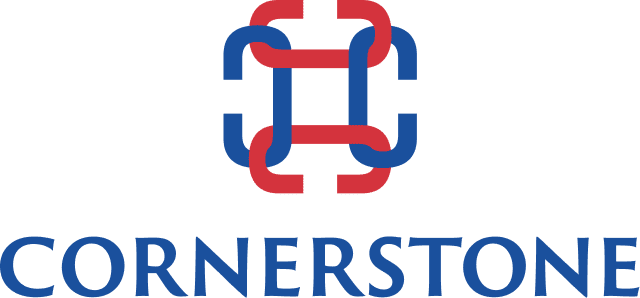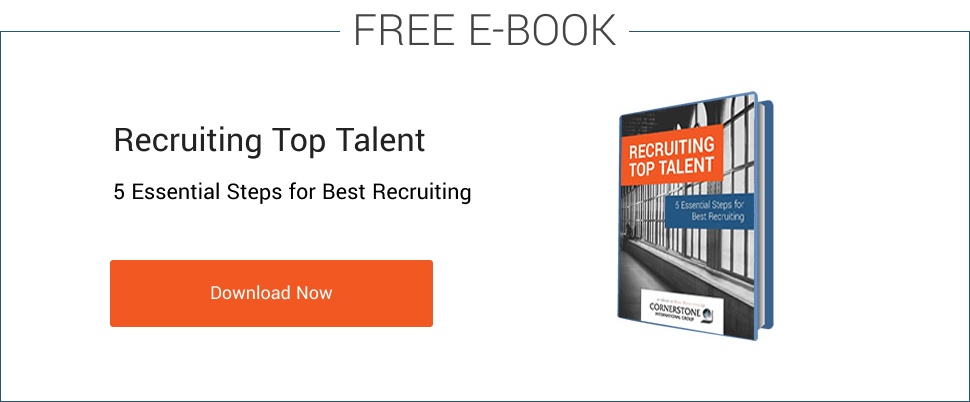Pharmaceutical Industry in Mexico: 2016 perspectives
(Or how to be successful in times of uncertainty and constant changes)
2016 will be a year of global as well as local changes in the pharmaceutical industry. Mexico will have a marginal GDP growth and limited government spending in the sector. Industry leaders reflect on their experience and share with us the most relevant skills and competences required to face these challenges and be successful.
Download this full Whitepaper (PDF)
The global pharmaceutical industry has been transformed. Companies have developed different strategies as their products face patent expirations and access to new products (most of them high specialty) is increasingly difficult. Some companies have broadened their product portfolio to include generics such as Novartis and Sanofi, while others focus their efforts in specific therapeutic areas (Roche and Astra Zeneca). Countless high specialty organizations are betting on this high income niche market. Around the globe, low interest rates and high taxes have triggered mergers and acquisitions deals. In the first 9 months of 2015 there were 152 deals with an estimated value of above 221B usd. (i)
Mexico is the eleventh global market for pharma with a net worth of 13.2B usd. The country has a population of 120 million and a stable economic situation, with an expected growth in GDP of 2.5 for 2016. (iii) The country has extensive Healthcare needs, particularly those related to chronic diseases such as cardiovascular, diabetes and cancer. Mexico is still considered an “emerging market” by many global companies. It is perceived as having enormous potential and companies hold high expectations for their local subsidiaries.
All this sounds very promising, but there are many challenges. According to the Corruption Perception Index, Mexico holds the 103rd place of 175 countries (iv). There are security problems in the country attributed to drug cartels. Mexico has 55.3 million inhabitants living in poverty.(v) In addition to this, government spending in healthcare as a GDP percentage is only 6.2% while the average of other OCDE countries is of 9.3%. (vi) Generic products have quickly increased their market penetration and in 2013 represented 84% of total market value. (vii)
Finally, the public sector, which represents 51.7% of total spending in Healthcare, is currently going through reforms and budget cuts.
There is no magic formula or unique strategy to face current challenges. Organizations are developing strategic bets to maximize their value and survive in a lower margin market with limited access to innovative products. 2016 will be a year of uncertainty and major industry changes. Industry leaders face more complex challenges than ever before in the past.
Key question: How will pharma companies achieve their goals in 2016?
To address this question, let´s first understand each of the two market sectors as they hold very different challenges:
Private sector: The private sector represents 48.3% of the market and 91.5% of this amount is out of pocket expense. Big pharmacy chains continue to grow and many independent pharmacies have gone out of business. In 2015, the Walgreens-Boots-Alliance acquired 1,030 points of sale. FEMSA has acquired different chains and now manages 2,000 POS in this sector. Another important aspect is the doctors’ consulting room, according to ANEVIFAC, more than 10,000 pharmacies have an adjoining physician’s room. This entails specific challenges for commercial strategies as well as for regulatory authorities. COFEPRIS is attempting to regulate these practices via SICAS. Results obtained until now are far from satisfactory.
Distribution was controlled by four major organizations: Casa Saba, Nadro, FESA y Marzam. Casa Saba’s going out of business has enabled others to broaden their market share.
Challenges in the public sector are basically linked to sell out of products in the POS and controlling and abiding doctors’ prescriptions. COFEPRIS is striving to implement regulation that results in better qualified pharmacy employees and dispatchers. Loyalty programs and CRM initiatives are common to promote private sales. In addition to these, pharma companies are promoting joint proposals with insurance companies to cover medical expenses.
Public Sector: We could dwell extensively on the complexities and challenges of the public sector. Starting from regulatory aspects and product registry at the COFEPRIS, insertion at the “Cuadro Básico”, public tenders and the understanding of the different government entities that purchase medicines, services and devices. This is a complex business cycle with many restrictions, price pressures and overall uncertainty.
In sum, this year public spending in healthcare will be limited. The best option is to efficiently manage a restricted public budget and align expectations accordingly
Constant changes, limited budgets, low margins and overall complexities… How will leaders be successful in Mexico?
Industry leaders believe that 2016 will be a year of uncertainty where one of the main challenges will be to manage limited resources. Many of them also believe that opportunities will not be on plain sight, leaders will have to be creative in their proposals and plans. As mentioned before, government spending will be restricted.
As we try to answer above, many leaders concur that they will have to take risks and exploit skills such as the following:
Efficient resource management and control: Alfredo Merino, General Manager of Fresenius Mexico, believes that when facing a market environment of low margins and monopsony (a single buyer that sets the rules) “it is more important than ever to maximize the organization’s resources (financial resources as well as human capital). We should bear in mind never to compromise the quality and sustainability of the business. The value chain must be run efficiently, negotiating with vendors and achieving economies of scale”.
Creativity: This will be a critical factor in lowering costs and identifying new opportunities this year. Luis Calderón, Former AMIIF President, believes that there are always options to develop new businesses and create value adding solutions for all stakeholders: government, patients, distributors and companies. It is important to think out of the box and question existing paradigms to come up with these ideas.
“We have to find new ways to bring health solutions to patients. Even if there are obstacles, we must strive to identify viable options, always in conformance with regulations and company policies.
Luis Calderón, Former AMIIF Presiden
On the other hand, public spending restrictions can represent an opportunity. There will be fertile ground for identifying new ventures. The Public Sector working together with the industry will search for options to support the population in their healthcare needs. Leaders will require creativity and out of the box solutions to develop these new ventures. They have to take chances and risks with new proposals and render them successful and sustainable.
Development of different strategic bets: Fernando Oliveros, General Manager of Medtronic Mexico, believes that leaders should challenge the status quo and invest in order to generate the right conditions to develop business opportunities. To him, it is important to collaborate and establish positive dialogs with government institutions and generate consciousness in different public and private forums. “We have to foster dialogs with the Public Sector that promote value adding agreements focused on enabling the population to access healthcare. Government cannot do it alone. The industry has to innovate and bring to the table strategic agendas for win-win solutions”.
Fernando also considers that it is crucial to start building today a long term sustainable business. He believes this can be done by adopting new technologies, envisioning different long term scenarios, investing on education and other long term strategic projects.
It is important to invest in developing multiple projects, focusing on follow up and execution. Not all of them will be successful, so we have to be resilient and responsive to changes.” – Fernando Oliveros, General Manager of Medtronic
Resilience: Locally as well as globally, this year will be marked by uncertainty. Successful leaders will evaluate market changes and will be able to constantly adapt to evolving conditions.
We are certain that 2016 will be marked by uncertainty. We have to develop short term decision plans and be able to adapt our strategies to fluctuating market conditions.” Alfredo Merino, General Manager of Fresenius Mexico
Strategic management of expectations: Last but equally important is communications and expectation management. Global companies have very high expectations for Mexico as an “emerging market”. Leaders in Mexico will have to manage these expectations assertively to align them to the country’s situation. Mexico has enormous healthcare requirements but it is in no position to address them.
In sum, 2016 will be a challenging year for pharmaceutical industry leaders in Mexico. Success will depend on their capabilities to understand market changes and develop new skills that will allow them to identify and maximize new opportunities in the market.
Acknowledgements
Du Tilly & Consultores would like to thank the following executives for their time and the valuable insight they shared with us:
Eduardo González Pier, CMMS Executive Secretary, Ministry of Health, Mexico
Alfredo Merino, General Manager Fresenius Mexico
Fernando Oliveros, General Manager de Medtronic Mexico
We would also like to thank all our friends who gave their perspectives and wish to maintain their participation anonymous.
About the authors:
Luis Calderón – Former AMIIF President, Luis has been General Manager of companies in Mexico such as Ex, Stendhal y Novo Nordisk. Luis has more than 19 years of experience in the pharmaceutical sector in Mexico and a broad knowledge of different therapeutic areas.
Geraldine du Tilly is a Partner with Du Tilly & Consultores. Geraldine has over twelve years of experience in executive search with a focus on pharmaceutical and technology industries and functional experience in Human Resources and Finances positions in all sectors.
i WIECZNER, Jen The real reasons for the Pharma merger boom, Fortune, 28 de julio de2015
iii HERNANDEZ, Leticia FMI realiza quinto recorte en el año a pronósticos de PIB. El Financiero, México D.F. 17 de noviembre de 2015
iv FORBES STAFF, México ocupa lugar 103 de países con mayor corrupción. FORBES, 13 de diciembre de 2014
v LUNA, Carmen, México tiene más pobres. CNNExpansión, 23 de julio de 2015
vi http://www.oecd.org/els/health-systems/Briefing-Note-MEXICO-2014.pdf
vii REDACCION, México es el país que más genéricos ha ingresado al mercado. El Financiero. México D.F. 14 de marzo de 2014







